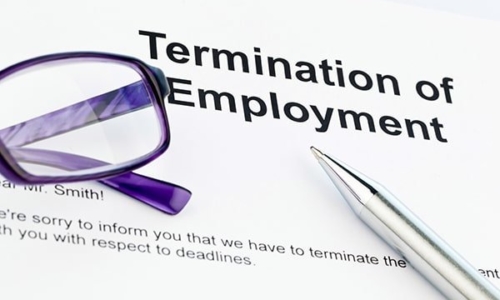Are you properly documenting warnings and terminations?

Keeping a record of events in the workplace, whether they are employee or management actions, may prove to be priceless in the future. It will be helpful when employees are terminated, file for unemployment, or if an unforeseen lawsuit comes into play.
Documentation provides the evidence you need to support a claim. If you do not have documentation, then your claim is severely weakened. For example, you can say that you warned an employee, but if there is no documentation to support your position, then you have substantially reduced your ability to prove that you warned the employee.
At the first sign of misbehavior or unacceptable performance, supervisors should make a brief note stating that they spoke to the employee about the issue and the date the conversation occurred. It should then be placed in the employee’s file. This may be the only documentation needed, because a manager’s early intervention often preempts the development of future problematic behavior. Remember, you should not assume that some rules are “common sense.” Instead, be as clear and detailed on company rules and policy as possible.
Once you have decided that formal disciplinary action must be taken, you need to go over the history of the problem and document the reasons that justify the discipline. A disciplinary warning in the file on the employee’s current situation should contain:
- A description of the problem and when the problem began.
- Notations of previous disciplinary problems and the consequences imposed. This will reveal whether the employee has had ample opportunities to improve problems but did not take advantage of them.
- Any negative impact the employee’s action created on the company.
- Specific expectations for changes the employee needs to make.
- Future consequences if the employee fails to improve or correct the problem.
- Past performance appraisals.
- Efforts by the employer to remedy the problem.
- A signature line on the warning form for the employee to acknowledge in writing that they received it, even if they do not necessarily agree with it.
- A signature line on the warning form for the employer and a witness to acknowledge the discipline occurred.
In the event that an employee is issued a written or verbal warning, you must be sure to forward this information to UAP to be kept on file.
When an employee’s problematic behavior or failing performance can only be resolved by termination, the termination form should review all of the same information as stated above for warnings forms. Clients of UAP are advised to call and utilize our free legal advice for all discipline and termination situations prior to taking any actions. After a member of our Human Resources staff gathers all of the relevant facts of the situation, a legal recommendation is promptly provided. As long as our clients follow our legal recommendation, our legal team would represent them at no cost in the event of any lawsuit that may arise from the situation.
If you have any questions regarding properly documenting employee infractions, please contact the HR Department at UAP.


